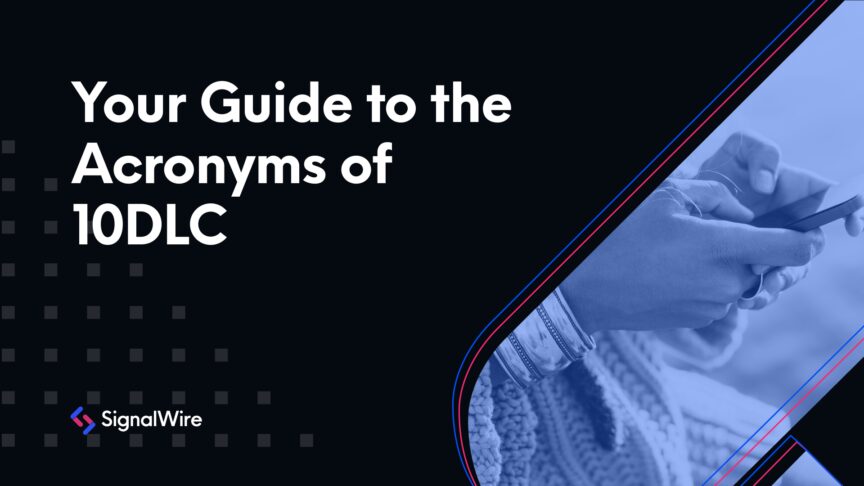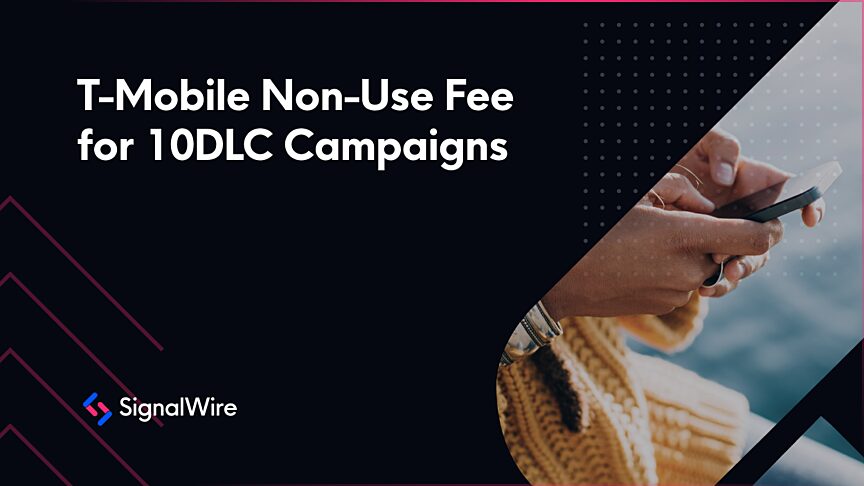Long codes, or standard phone numbers, have traditionally been used only for Person-to-Person (P2P) messaging. However, usage of long codes for messaging campaigns has increased due to their simplicity and ability to meet the needs of Application-to-Person (A2P) messaging between businesses and customers. As text message volume has continued to increase for these desired messages, some businesses have used the same technology for sending unauthorized spam messages.
An environment in which there is a high volume of spam messages clearly is bad for customers, Brands, and the mobile industry overall. To answer this market need, U.S.-based MNOs (or wireless carriers) launched The Campaign Registry for A2P 10 Digit Long Code (10DLC) in 2020. This is a fully sanctioned service that provides visibility into message sources and content.
Navigating the 10DLC Ecosystem
There are four categories of players involved in the 10DLC ecosystem:
MNO - These are the Mobile Network Operators or mobile carriers, the companies that deliver your messages to end users using their own networks. You’re likely familiar with many of the big players in this category, like Verizon, AT&T, and T-Mobile.
DCA - Direct Connect Aggregators are companies that have direct connections to the MNO’s gateways and transmit messages on behalf of its customers (such as SignalWire).
CSP - A Campaign Service Provider is the provider of messaging services to its customers. A CSP works with its customers or brands to create and launch new and successful messaging campaigns. This is where SignalWire comes in - we are a fully registered CSP.
Brands - This is the company or entity (you!) that will be sending the messages to its End Users.
There are a lot of acronyms involved in the world of 10DLC and TCR. Check out our glossary of common 10DLC terms to learn more.
The process of navigating the 10DLC ecosystem starts with your Brand. Once you register your brand and campaign, a CSP like SignalWire will handle the process from there. We’ll vet your campaign and push the connection request upstream to a DCA, and once that DCA accepts it, you’ll be set to start sending out messages.
Examples of A2P Messaging
These are four of the most common use case scenarios for A2P messaging. Keep in mind that even if your traffic meets P2P guidelines, it is still considered A2P by the carriers if it’s for a business use case, meaning you still need to register. Our detailed guide to all things TCR has a list of use cases beyond the common examples below.
Customer Service: a call between a contact center and a customer concludes with a text from the company (e.g. a survey, information, order details, appointment, etc.) to the customer.
Two-factor Authentication (2FA): a bank sends an authentication code, which enables a secure login for a customer to access their account safely.
Operations (reminders/notifications/alerts): a doctor’s office sends an appointment reminder to a patient with the ability to text or call to confirm.
Anonymized Numbers: a ride-hailing service manages messaging interaction between a driver and a passenger while keeping the actual phone numbers of both sides anonymous from each other.
About The Campaign Registry
MNOs partnered up to create TCR, a single source of information about 10DLC messaging campaigns throughout the United States. This database enables the MNOs to see who sent any given 10DLC message and what they claim to be sending, which can be checked and validated against actual messaging behavior. TCR is all about building a centralized, trusted access point to key information.
MNOs can now have visibility into the “who” and “what” of each messaging campaign, which allows them to provide a better quality of service for 10DLC messaging. Meanwhile, service providers like SignalWire can have confidence knowing that they are using an officially sanctioned messaging channel. Customers can finally benefit from a better quality of service as well as better predictability of success for messaging campaigns.
One thing to keep in mind is that there are fees associated with registration, and they vary across use cases. Our pricing guide for TCR is always up-to-date on what fees to expect. Whether you want to stick with 10DLC or go the route of using short codes or toll-free numbers, there are varying registration processes and fees to go along with each of them.
The first thing you register is your business as a Brand. Once registered, a Brand is given a unique Brand ID which is associated with all its campaigns, phone numbers, and messages. To become a Brand, the registry requires you to provide details about your business such as official company name, website, Tax ID or EIN, and company contact information.
We will then need to register each of your unique campaigns. Once registered, each campaign will also be given a unique ID, which will then need to be connected to an upstream DCA before numbers can be assigned. You’ll have to describe your use cases in as much detail as possible, provide opt-in/out processes, and message samples.
Usually the registration process takes 3-5 business days, but entering all your information will only take a few minutes. Our TCR wizard makes the process quick and easy if you’re prepared with message templates and the details listed above.
Benefits of Registering with TCR
This is an industry-wide process that all messaging service providers need to abide by. Though it’s required by carriers, registering is also generally good for your business. Since it was created to reduce spam and fraud, it will increase trust and security in your brand and give your customers confidence that you aren’t spamming them.
Because messages are less likely to be flagged or blocked by carriers, you’ll improve deliverability and throughput. Registering also ensures you avoid penalties for not complying with the legislation. A2P messages received by the MNOs that didn't take the proper A2P route will likely be blocked (even if all other CTIA guidelines are met) or fined.
SignalWire has been at the forefront of these changes for quite some time and is a fully registered Campaign Service Provider with TCR. You can initiate the process of getting registered by visiting the Messaging Campaigns section of your SignalWire Dashboard and submitting the necessary details for your request in our user-friendly wizard.
Have questions? We have answers! Check out our extensive TCR FAQ, add us on Slack, or ask us on our Community Forum.


